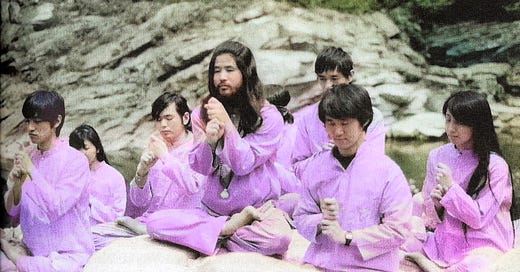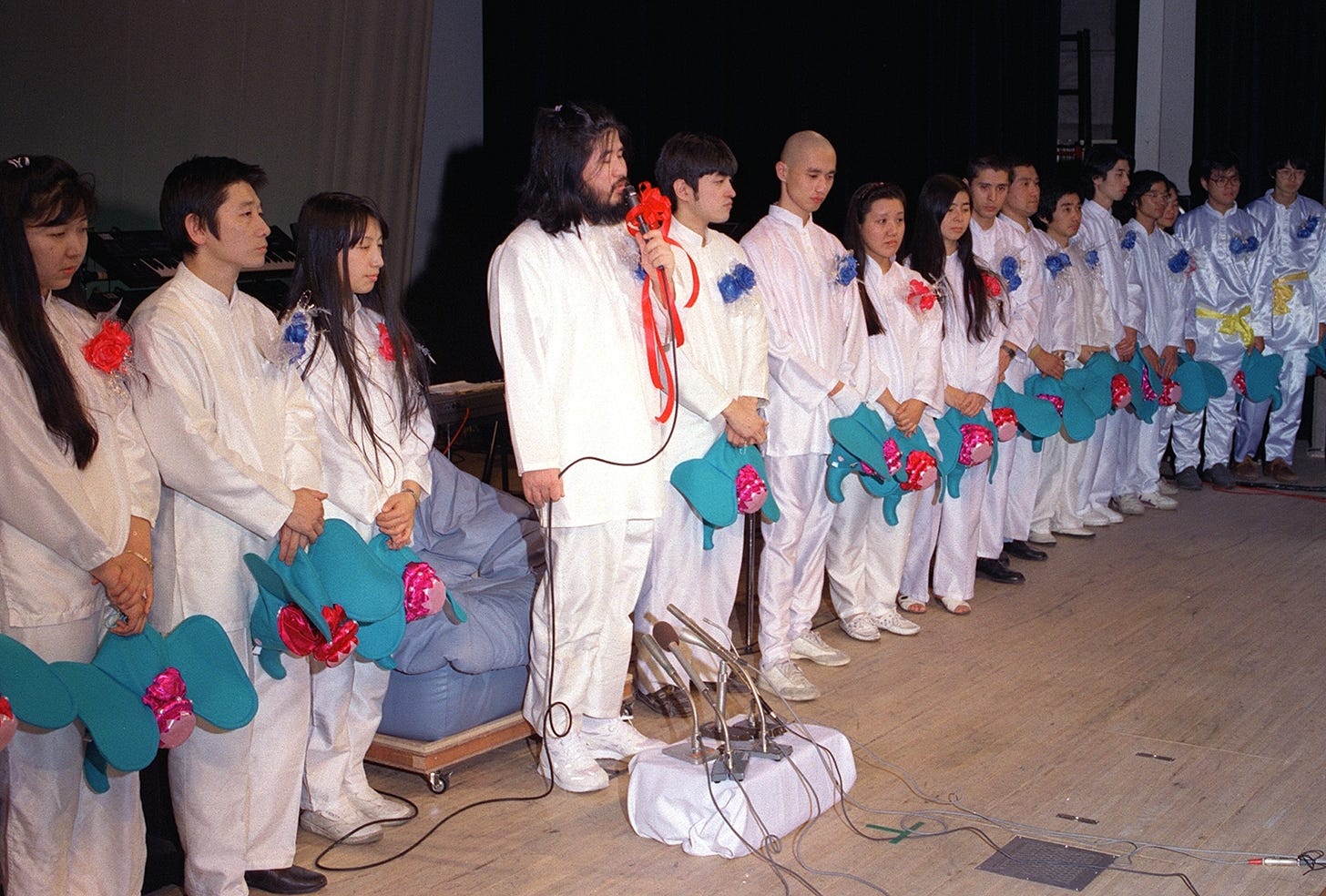Aum: The Cult at the End of the World Review: Propaganda Works
Streaming Movie Review - VOD - Documentary
Just over thirty years ago, the cult Aum Shinrikyo, led by Shoko Asahara, released sarin gas in a subway in Tokyo. There had been an attack a year earlier, but the authorities were unable to determine where it came from. This time, however, they were able to trace it to Aum. This horrifying story and how it came to be is examined in the new documentary, Aum: The Cult at the End of the World, from filmmakers Ben Braun and Chiaki Yanagimoto.
The documentary follows Aum from its early days up through the attack and beyond. Something that the film does exceptionally well is detailing how the cult gained momentum. Building on the fear of the end of the world that people had following the attacks on Hiroshima and Nagasaki, Asahara was able to amass young people hungry for some kind of religious meaning. Aum was a blend of various faiths, including Buddhism, Hinduism, and Christianity. In a country not particularly known for religious fervor, this was an interesting turn, and it was clear that the police and the media were unsure how to deal with it.
This was the other element that Aum: The Cult at the End of the World did well - it showcased the way that the media turned Asahara into a harmless character who was more fascinating than a cult leader. It softened his edges, making him more palatable to the mainstream and allowing Aum to gain significant numbers. It also showed the failure of the police to follow up on violence that occurred after Aum was unable to win any seats in the 1990 Japanese House of Representatives election.
Where the film struggled was in capturing the mindset of those who chose to follow Asahara. This isn’t to say that it isn’t touched on. Aum grew considerably following the collapse of the Soviet Union, and the filmmakers definitely touch on the mindset of those who were susceptible to the teachings of Asahara, but it definitely felt like there was more to explore in that vein. It felt like some human aspects were brushed over in the desire to create a comprehensive timeline of the cult and the events that led up to the March 1995 attack in Tokyo.
Aum: The Cult at the End of the World includes interviews with people who were affected by Aum Shinrikyo. There are parents who lost children to Asahara’s charm. They even included Fumihiro Joyu, a leader in Aum who managed to escape prosecution following the attacks. The stories are compelling and heartbreaking.
One of the most important takeaways of this documentary is that none of us are immune to propaganda, and we are most vulnerable to it when we are feeling afraid and isolated. Aum Shinrikyo grew and ultimately became violent because people felt alone. Aum: The Cult at the End of the World is an important documentary reminding us to keep our eyes open for those who would manipulate us.
Rating: 4/5
Find my interview with directors Ben Braun and Chiaki Yanagimoto.
This review originally appeared in The Dominion Post on April 5, 2025.






